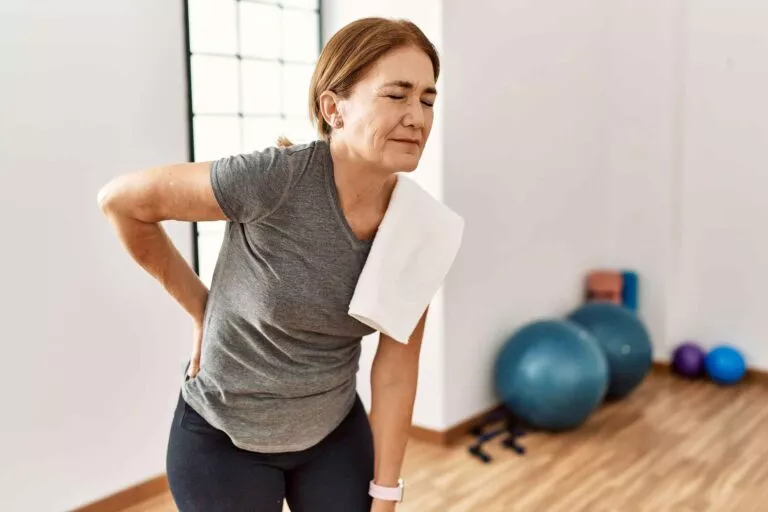Mechanical problems and soft tissue injuries are the common causes of lower back pain. These injuries can include disc damage, nerve root compression, and improper movement of joints in the spine.
CAUSES OF CHRONIC LOWER BACK PAIN
Pain is considered chronic when it lasts more than three months and goes beyond the body’s natural healing process. Chronic lower back pain is often associated with disc problems, joint problems, and/or irritated nerve roots. Common causes include :
Lumbar herniated disc :
The viscous center of the lumbar disc can break through the hard outer layer and irritate nearby nerve roots. The herniated portion of the disc is filled with inflammatory proteins when they reach the nerve root, and the inflammation along with nerve compression causes nerve root pain. The disc wall also contains many nerve fibres and tears in the wall can cause severe pain.

Degenerative disc disease :
The intervertebral discs are hydrated and in good condition at birth. Discs get dehydrated and deteriorate as we age. When the disc dehydrates, it becomes less able to withstand stresses and transmits those forces to the disc wall, which may tear and create discomfort or weaken, which may result in a herniation.
Facet joint dysfunction :
Each motion segment of the lumbar spine has two facet joints behind each disc. These joints have cartilage in the spaces between the bones and are encased in a capsular ligament that has extensive nerve innervation. These joints may hurt on their own or in combination with disc discomfort.
Sacroiliac joint dysfunction :
The sacrum at the base of the spine is joined to either side of the pelvis via the sacroiliac joint. It is a strong, low-motion joint that mainly serves to disperse stress and tension between the upper and lower bodies. When the sacroiliac joint is inflamed (sacroiliitis) or when the joint moves too much or too little, it can become uncomfortable.
Spinal stenosis :
Pain is brought on by this condition’s constriction of the spinal canal, which houses the nerve roots. The narrowing in the lower back may be central, foraminal, or both, and it may occur at a single level or several levels.

Spondylolisthesis :
When one vertebra slides over the nearby one, this disease develops. There are five different forms of spondylolisthesis, but the two that are most frequently present are mechanical instability of the facet joints and defects or fractures of the pars (the space between them) (degenerative). Instability in the back or compression of the nerves might be the source of the discomfort.
Osteoarthritis :
The disc and facet joints’ wear and tear is the cause of this disorder. It can affect one level of the lower spine or several levels, and it can produce varying degrees of discomfort, inflammation, instability, and stenosis. Age-related spinal osteoarthritis is a slowly progressing condition. Degenerative joint disease and spondylosis are other names for it.
To know more about your lower back pain and to get proper treatment visit Specialty Care Clinics. Our experienced healthcare professionals will start with the proper diagnosis of your condition and start with the treatment accordingly. Call us now.
